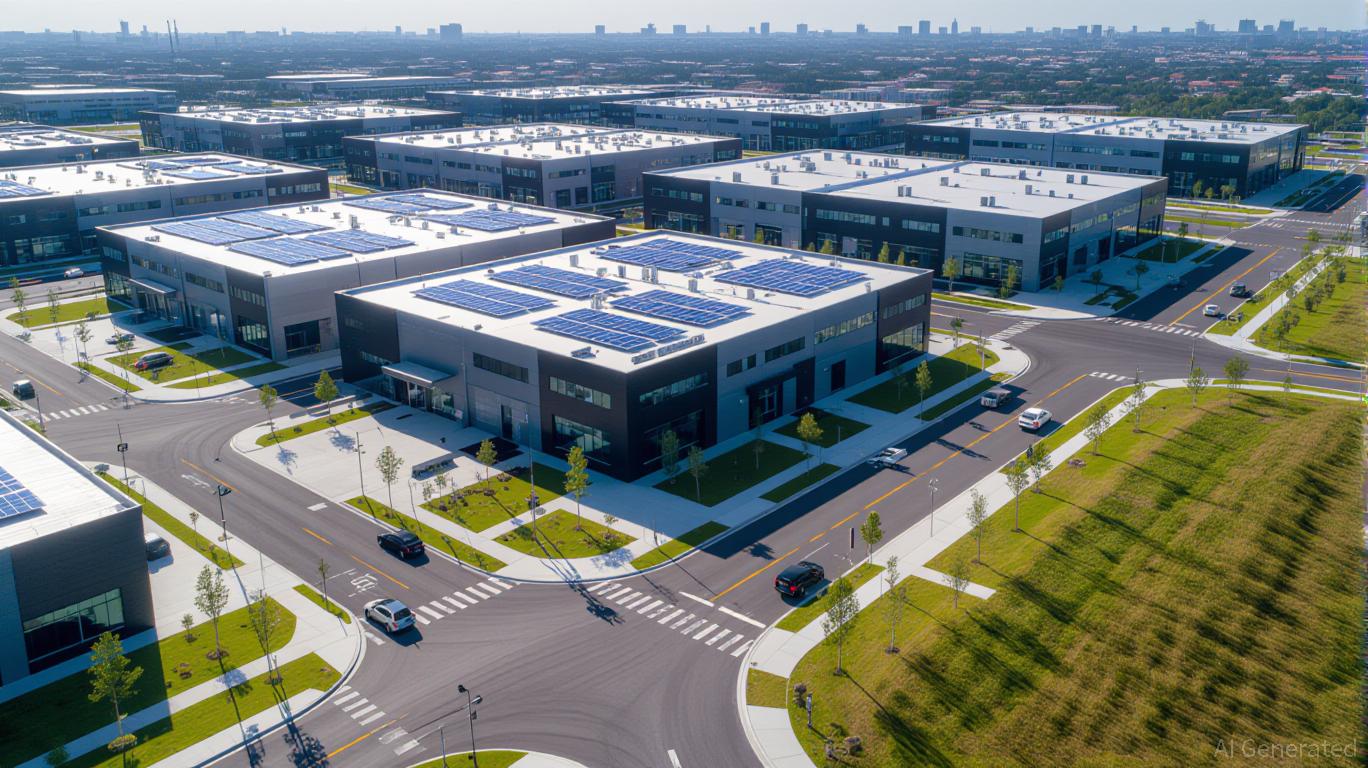Webster, NY's Approach to Industrial Growth and the Transformation of the Xerox Campus
- Webster , NY, is transforming its Xerox campus brownfield into a high-growth industrial hub via infrastructure grants and zoning reforms. - FAST NY grants and $283M state funding target road, sewer, and electrical upgrades to make the site competitive with coastal industrial markets. - Zoning changes enable mixed-use development, including advanced manufacturing and residential components, creating a "bluefield" model. - State programs like Brownfield Opportunity Area reduce redevelopment risks through t
Infrastructure as a Catalyst: Grants Paving the Way
Webster’s revitalization took off with the awarding of a

The benefits of these grants reach far beyond the initial construction phase. For example, the FAST NY initiative,
Zoning Innovations: Turning Brownfields into Bluefields
Zoning adjustments have played a crucial role as well. Conventional industrial zoning often limits mixed-use projects, but Webster’s changes—part of the Reimagine Webster Initiative—have redefined parts of the Xerox property to support advanced manufacturing, logistics, and even residential uses
One standout project is the Community Access Project, which
Measuring Impact: Real Estate Trends and Economic Ripple Effects
The positive outcomes of these strategies are becoming evident. As of October 2025,
Additionally,
Investor Perspective: Managing Risk and Looking Forward
For those investing in industrial real estate, Webster’s story marks a significant shift. In the past, secondary markets were often seen as risky due to limited infrastructure and uncertain regulations. Now, targeted efforts like FAST NY grants and zoning updates are turning these weaknesses into strengths. The Xerox campus is a case in point: once considered unsuitable, it is now attracting fast-growing industries, thanks to public-private collaborations that help shoulder initial costs.
Moving forward, Webster’s continued progress will depend on sustaining this momentum.
Conclusion
Webster, NY, is not an exception but a sign of a larger movement: intentionally increasing the value of industrial real estate through infrastructure and policy. The redevelopment of the Xerox campus shows that with the right combination of funding, flexible zoning, and strategic planning, even the most challenging sites can become engines for economic growth. For investors, the message is clear: secondary markets have moved to the forefront, where smart public investment and private innovation combine to reveal value that was once hidden.
Disclaimer: The content of this article solely reflects the author's opinion and does not represent the platform in any capacity. This article is not intended to serve as a reference for making investment decisions.
You may also like
Bitcoin Updates: Institutional Investors Return and Soft Policy Hints Drive Bitcoin's Significant Recovery
- Bitcoin surged above $89,000 in late November 2025, reversing a six-month low amid institutional reentry and macroeconomic optimism. - Fed rate-cut expectations (84% for December) and $238M Bitcoin ETF inflows fueled dollar weakness and crypto demand. - Coinbase's 22-day negative premium reversed, signaling easing institutional selling pressure and potential trend reversal. - Solana's $145 slump highlighted crypto divergence, while Bitcoin's $100,000 support and open interest dynamics indicated bearish e

Artificial Intelligence Applications in Biomedical Studies and Their Impact on Investment
- AI is revolutionizing drug discovery by accelerating timelines and reducing costs in pharmaceutical R&D. - Companies like Insilico Medicine and Exscientia use AI to cut drug development cycles by 70% and reduce compound testing, advancing candidates to clinical trials rapidly. - The AI-driven biotech market is projected to reach $350–410 billion annually by 2025, offering investment opportunities in AI-native firms and infrastructure providers. - However, regulatory challenges and the lack of approved AI

Internet Computer’s Latest Rally: Driven by Network Enhancements and Growing Institutional Interest
- Internet Computer (ICP) surged in 2025 due to technical upgrades, institutional partnerships, and speculative trading. - Fission/Stellarator boosted capacity by 50%, while Meridian/Flux aim to enhance cross-chain interoperability and scalability. - Q3 2025 saw $1.14B trading volume but 22.4% DApp engagement drop, highlighting infrastructure-user adoption disconnect. - TVL discrepancies ($237B vs. $1.14B) and reliance on institutional capital raise sustainability concerns amid inflated metrics. - Partners

South Korean Firm Bitplanet Boosts Bitcoin Stack to 228.5 BTC